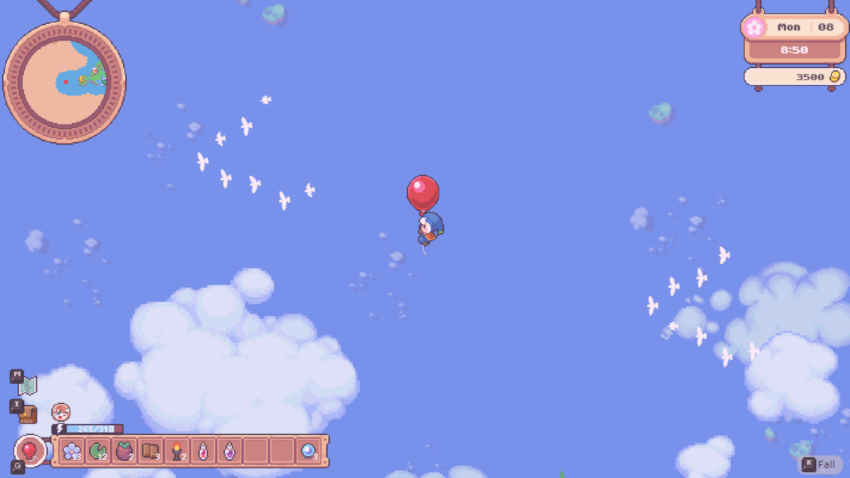Here’s my honest Moonstone Island review. I was not given a review code for this game.
Moonstone Island is a much-anticipated indie creature-collecting farming sim on Steam for Windows, macOS, and SteamOS/Linux. You start as a predetermined, nameless protagonist (no character creation, sorry) about to leave home for one-year of Alchemist training. You’ll settle into a community abroad and develop your skills of gardening, foraging, crafting, and potion-making.
That’s the gist of it. But the story, of course, throws you a curveball. After you set off on your flying broom to find your new home, you crashland in a wind storm. You are rescued by Ossono, the friendly inn keeper and tavern owner, on Moonstone Island. Of course, this becomes your de facto place of settlement.
Here, you’ll set up your tent, meet the locals, start collecting resources, craft up a storm, tame a few spirits, and even accept a few beginner quests! The game is so mechanics-rich that it comes down to time management most of all. Will you spend your day battling and collecting creatures? Will you traverse a dungeon looking for ore and treasure? Will you socialize across town? Upgrade your house? Expand your garden? The game doesn’t push you one way or another. Once everything opens up, you can spend your time in whatever area feeds your soul the most.
As you might have gathered, the game doesn’t hold your hand. It’s like Pokemon or Harvest Moon for grown ups. And it’s actually a little challenging at first because you aren’t even told where you’ll be living. It’s wherever you want to clean up and stake down your tent. Or, you can spend some time renting a room at the inn while you get a lay of the land.
Be sure to meet all the locals first and foremost. Everything you need to succeed in the game will be given to you in hints and quests. Once you have all the puzzle pieces, you can start building out your game board however you see fit.
This isn’t your grandma’s creature collectathon; it’s something new and fresh. Moonstone Island takes risks. And for the most part, they pay off.
Pro Tip: This Reddit thread by u/cocoakita is the most useful beginner’s tips for the game I have seen so far. Some spoilers included, most blocked out.
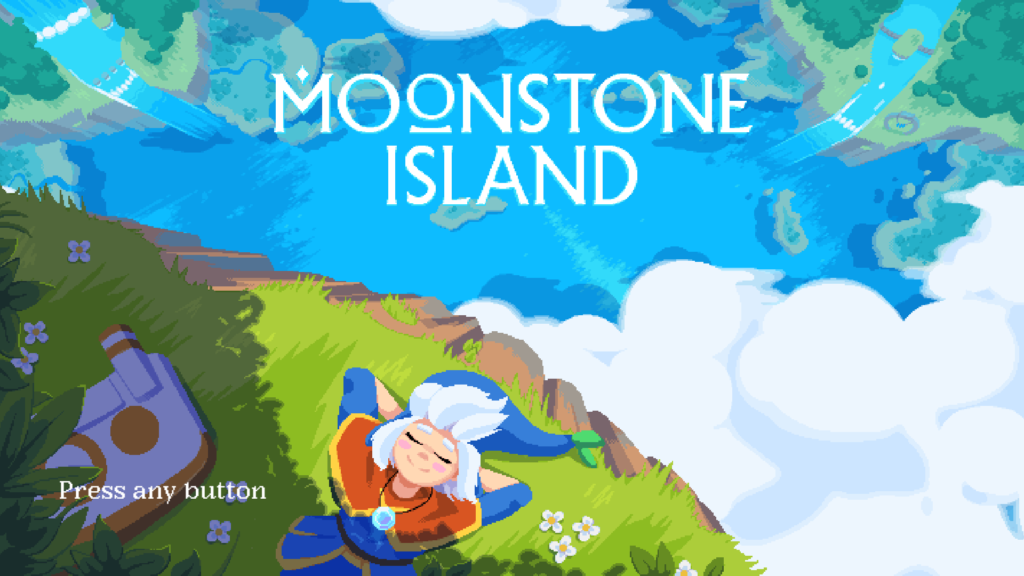
First Impressions
I fell head-over-heels in love with this game almost immediately. The game blends dungeon exploration, creature collecting, farming, and even dating into one game. It is super ambitious but I think it meshes well. I never felt overwhelmed by all of the competing genres and the story stitched them all together nicely. day-to-day gameplay loop was meditative and satisfying.
I peeped flashes of inspiration from Studio Ghibli, Pokemon, Legend of Zelda, and Harvest Moon. Everything a cozy games player loves to see. It is a unique genre mash-up that I have never seen before and I think few developers, particularly indies, would dare to dream up.
Being so conceptually busy, some players might have a rough time getting started in the game. There is a lot to organize right off the bat before you find your flow. But this game is tailor-made for players like me who are tired of farming sims and Pokemon games feeling too easy or too obvious.
I wouldn’t recommend this game to someone who has never played a farming sim since GameCube or thought Pokemon Scarlet and Violet was challenging. But for those ready for the next stepping stone in each genre, Moonstone Island could be it.
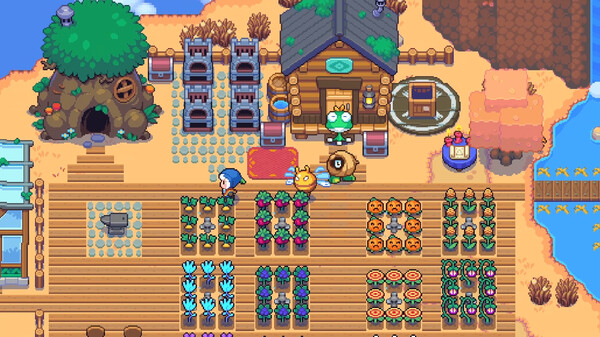
The Mechanics
Moonstone Island has a lot going on. For those wondering “Should I play Moonstone Island?” this will be a good place to start. I’ll give you a rundown of how you can expect to spend your time, as well as how it all fits together and to what degree of harmony/doctors it does so.
Resource gathering and crafting will be a huge component of this game. You can even build your own bridges to help cross gaps in the land, so as you can imagine crafting becomes pretty critical almost immediately. It gets a bit messy with the amount of crafting stations and menus you need to get stuff done, but it’s no more or less chaotic than other titles in the farming sim arena.
Island exploration and dungeon crawling is probably the second largest task on your plate. It’s unavoidable to progress the game but it also helps with resource gathering, finding new spirits, locating mines, harvesting new seed varieties, uncovering dungeons, and unlocking shrines. There are 100 islands in Moonstone Island to explore and the game makes it worth your while to uncover as many as you can.
Creature collecting is a bit clumsily tied into the overall story of being an Alchemist studying abroad, but it’s what drew me to Moonstone Island in the first place so I’m not going to complain. The creatures, called “spirits,” come in a variety of quirky and whimsical designs that never cease to delight. They have base stats, type varieties, and even rare physical anomalies called holographics (think: “shinies”) much like you see in the Pokemon games. The combat system, however, has its own unique flare…
Combat card battling is how your spirits go head-to-head against wild varieties or guardians of dungeons and temples. Each spirit comes with a set number of cards and you can add to them, upgrade them, or remove them to create your ideal battle deck. You’ll have 3 spirits on your team with different skills and specialties to choose from. You will receive new cards from leveling up or from shines (be sure to pick the talisman that adds a card, as you can also upgrade or remove them). The battle system is very well thought out but relies on some measure of “luck of the draw.”
Farming won’t take up a ton of your time—you unlock sprinklers and the greenhouse recipe very early on—but everything you do in the game hinges around grown or gathered crops. There are crops that give you stamina, crops that tame monsters, crops that give stat boosts, crops that give EXP—you get the picture. Moonstone Island does a great job of making farming elements count without having them monopolize your day.
Socialization and dating the townsfolk is maybe the most easy-to-miss mechanic. It’s totally optional and with a game so jam packed with stuff to do, I found it falling to the wayside a bit for me. The cast of characters is diverse and delightful and there is a rich opportunity for this to be some players’ most memorable part of the game. You can chat, joke, or flirt with townsfolk 3+ times per day with a chance of success/failure for each. I think this measure of backsliding constantly is what steered me away from spending more time here, as I only have so many hours in a day. Any loss of momentum hurts dearly when I have a to-do list longer than Armbot’s arms.
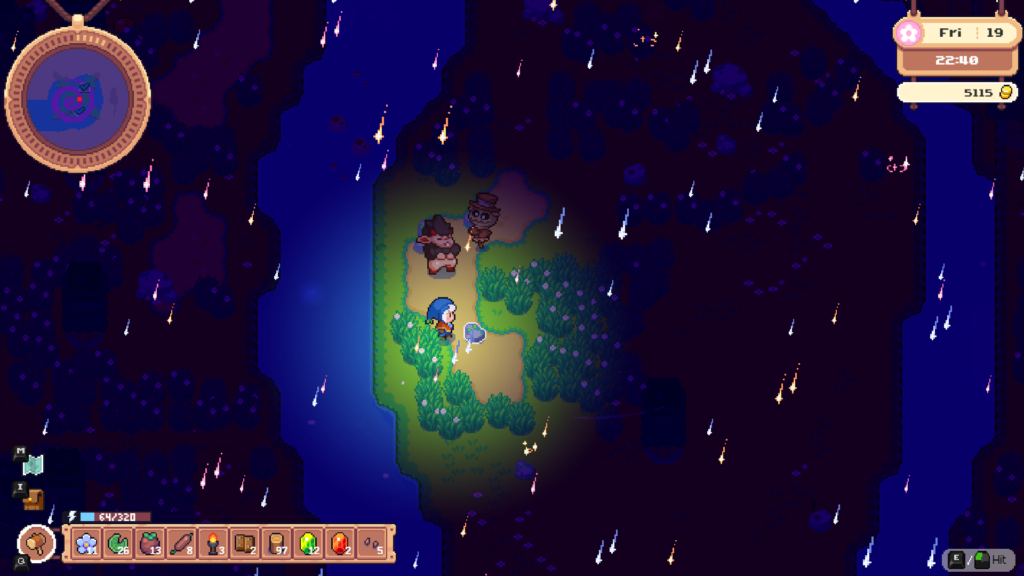
Where Moonstone Island Stands Out
There was a lot that impressed me in Moonstone Island. Here are the highlights.
Experimental Genre
Moonstone Island mashes together myriad genres for a completely unique gameplay experience. It’s not a technique I would recommend; most indies focus on one genre and try to put their own spin on it. But what Moonstone Island gets so right is that creature collecting, farming simulation, light dungeon crawling, dating sims, and open world exploration have in common is that they are all favorites of the cozy gaming community. It’s the wildest genre mash-up in cozy game history…but it works.
Each genre lends itself to the others in a really interesting way. There is so much to do on every island you uncover. You are looking for dungeons (or, if you’re lucky, a temple), taming new spirits, gathering resources, and uncovering secrets. Moonstone Island took a big risk by trying to do so much in one game. Could it have been more refined? Sure. But was it a breath of fresh air for most of these well-trodden gaming genres? Absolutely.
Tons to Do
…in a good way! The game is packed with different genres and mechanics that you wouldn’t usually see in one place. It feels busy at times but not unmanageable. It’s cluttered, but it works. Each new day you could tackle wildly different tasks than the last. If you’re getting bored of hanging around town, see how far you can fly on your broom or glider. If you need a break from traveling and combat, stay close to home and do some fishing. If you’re feeling ambitious, why not all of the above?
All of the mechanics blend together well as each project scope lends itself to the next. Exploring the expanse of 100+ islands will come naturally with resource gathering; you will find new spirits organically while you are looking for moonstones or dungeons; you can socialize in town while fishing and foraging. Everything stacks to create days that feel variable and exciting rather than monotonous.
Diverse Cast of Characters
Something I’ve noticed in modern farming sims is the dating/social aspect seems to be a total afterthought. Which is so weird to me because games like Stardew Valley demonstrated that players want thoughtful, interesting, and even surprising character interactions and stories. We want to win over the aloof loners and earn the trust of the shy bookworms.
Games like Fae Farm always surprise me when the NPCs are one dimensional, cookie-cutter background art. They have nothing interesting to say and their personality can be described in one word (lazy, lumberjack, glamorous). Instead of picking your favorite to woo, you end up picking the most tolerable of the humdrum lot.
Moonstone Island did not make these same missteps, though it could have and still been forgiven for it because it has so much else going on. No, each character is well designed, well rounded, and diverse in how they look, talk, and act. You will immediately have a few favorites and struggle to pick between them. There is plenty of LGBTQ+ representation, too, which is a huge bonus.
Dynamic Skill Tree
In Moonstone Island, you will be filling out a skill tree for each element of the game: spirit collecting, combat, archaeology, agriculture, foraging, and socials. You can probably guess what activities it takes to get points for each. Talking to people and giving them gifts will level up the social tree, breaking rocks and collecting ore will level up the archaeological tree, and so on and so forth.
Not only does this give you plenty to focus on, but there are locked paths that can make the flavor of different playthroughs unique. On one save file, you might unlock the path that makes chats, jokes, and flirts more successful. But doing so blocks off a path where you can talk to characters once more per day or give one additional gift per week. This means there are dozens of combinations to choose from that can make each playthrough feel a bit different.
Creature (Spirit) Design
The creature design was one of the things that initially drew me to the game. Spirits range from cute to totally bizarre, from anthropomorphic beach balls with sunglasses on to charming takes on cats, dogs, sheep, or bees. Some of them are strange robots. Others are deformed plant-tree hybrids. Anyone who doodled their own Pokemon designs in grade school will feel seen.
The creature design doesn’t take itself too seriously. Every spirit is crafted with whimsy. If you are anything like me, you’ll struggle to pick a team that’s not based strictly on aesthetics. There is so much to adore in every single design. But the combat gets challenging—fast. So have fun rotating between your tamed spirits until you find the team that works best.
Simple, Engaging Card Battler
Crafting a wholly new and unique turn-based battle system can be tough. How “new and unique” do you go before you alienate your audience? Moonstone Island keeps it simple, while providing tons of space to strategize and customize to your heart’s content. Each turn you draw a hand of cards, which will offer attack, status condition, strategy, and armor-weakening effects. Removing your opponents armor will increase attack damage. Plants, flowers, and potions can offer various additional effects, from healing to stat boosts.
It’s straightforward and easy to grasp. Even those who never play card battlers will have no trouble picking up on the basics. There is plenty of opportunity to get into the nitty-gritty systems to improve your strategy. Learn to stack status conditions like poison or burns. Leverage the ability to peek into your discard pile or deck and manipulate what you draw next. Or, play it straight and just focus on hitting hard by leveling up your strongest attack cards using talismans found scattered across the floating islands.
Open World Replayability
Moonstone Island has a sprawling 100+ islands to explore, each one randomly generated. That means your first save file will have a completely different open world to explore than your second, third, and fourth save files. Considering how inexpensive the game is comparable to AAA releases, this is a ton of content that will keep you preoccupied for ages.
Some players might not appreciate a procedurally generated world, but it makes sense in this game. The “hundred floating islands” world map creates the perfect universe for this gimmick. The islands don’t need to relate to each other in any particular way. Moonstone Island is a story about striking out on your own for the first time and facing countless unknowns on your way. Being constantly surprised (and delighted) by the world around you is thematically relevant.
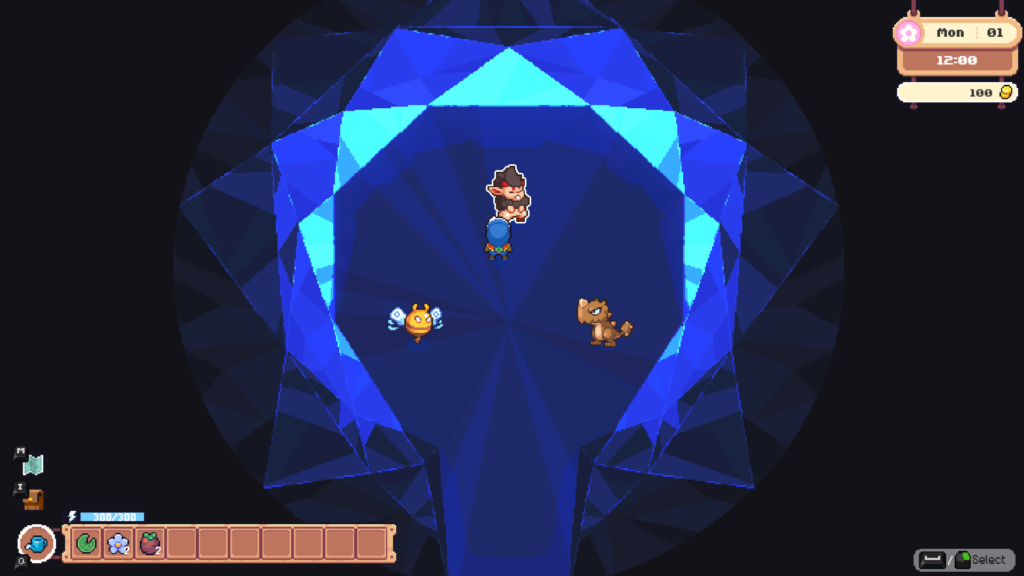
Where Moonstone Island Stalls
Every game has its flaws ranging from “not that big of a deal” to “game breaking.” My critiques of Moonstone Island mostly land in the first camp. Here is a summary.
Sorry Cohesion
What does Alchemy training, creature collecting, and spirit temples have in common? Err…not much, actually. I love each and every element in Moonstone Island but the story struggles to tie them all together convincingly.
The Alchemist training arc actually gets lost in everything else I’m incentivized to do. Letters from Mom and Dad back home will remind me that I am supposed to be brewing concoctions and discovering new recipes. But that doesn’t fit into my day-to-day plans. The temples and open world exploration is much more compelling. And I’m not sure why I need to be an Alchemist at all when I’m so much better at saving the world.
Lacks Focus
If you asked me what the overarching goal of Moonstone Island is, I wouldn’t be able to decisively tell you. Are you trying to prove your alchemy skills with crafting and potion-making? Travel the “world” and uncover every island? Collect all the different varieties of spirits? Train to be the best spirit battler? The game lets you decide.
This flexibility will serve players well if they love a cozy sandbox experience. But those who want to march toward a primary objective will be left wanting. This may also discourage players who want to know: What’s the point of what I’m doing in-game? Why does it matter that I have tamed all 66 spirits or explored 100 islands? Moonstone Island won’t answer this for you.
Clicking Chaos
It takes a lot of clicks to do a thing. Take smelting ore into ingots, for example. You right click the furnace once, right click the ore in your inventory three times, right click a piece of coal once, and then left click the confirmation button. You will see a lot of this in Moonstone Island, where basic tasks take huge amounts of technical manoeuvring. I was playing using keyboard and a mouse so I’m not sure how controller’d folks will fare.
More shortcuts, hotkeys, and streamlined click patterns would very much be welcomed. This starts off hyper-noticeable but starts to fade into the background as you get used to things. Smelting ore was one thing that tripped me up almost every time, so that’s why it was front-of-mind. There are also instances where “select” is done using left click (picking a card to play in battle) and others where you have to use right click (picking a plant to feed in battle). This can get confusing trying to remember when to switch from one to the other.
Resource Randomness
I needed a lot of ore and ingots to do some pretty critical things right off the bat. Examples include fixing my broom and building a barn so I can tame and keep more than 3 spirits at a time. Mines pop up under destroyed rocks at random. The game gives you one right away but the second one didn’t appear for me until much later.
Rare item drops are manageable…but this felt different. Knowing where something resides or where it drops, and also knowing it doesn’t drop often, is a common game mechanic that I have no qualms with. But the items being withheld here were critical to the basic mechanics of the game (creature collecting, air travel, tool improvement). It would have been preferable to have mines marked on the map somehow, as you can easily waste a whole day crushing rocks unnecessarily just to look for one.
The Countdown
The game insists that you are on a year-long Alchemist sabbatical, of sorts. One of your first quests is even to be away from home for one year. Regardless of whether or not there is “post-credits” continued gameplay (spoiler: there is), having a one year deadline hanging over you in such a busy and beautiful game is rough. I wanted to take my time and enjoy things but I felt like I couldn’t. The resource-intensive barn complaint mentioned above, for example, was made worse by the fact that I was literally counting the days it wasted me. Spring 11….spring 12…spring 13… Every day that ticked by was siphoning out of a limited pool already stretched too thin.
In a game where you are trying to develop an alchemy practice, tame up to 66 spirits, fight your way through temples, find and complete dungeons, visit as many of the 100 islands as you can, and date someone in town all at once, there is just no benefit to having such a tight timeline looming over you from day one.
Singles-Only Hometown
Everyone on Moonstone Island is dateable. There are no families, elders, or children. You won’t find young parents with a child or an elderly couple growing old together. It is a weird 18+ resort town where everyone appears to be roughly the same age and looking to mingle. This makes the town much less believable and interesting than other games. It doesn’t feel alive; it feels like an uncanny valley Truman Show hamlet just waiting for you to swoop in and be the star.
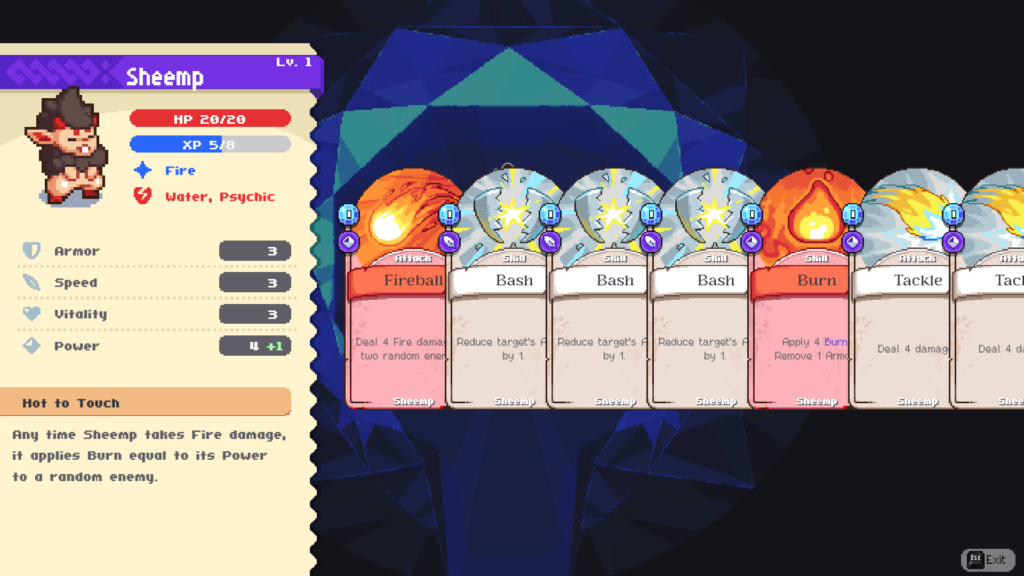
A Summary
Moonstone Island is a crazy, mismatched quilt of genres and ideas stitched together clumsily, albeit with lots of love and care. With a charming cast of characters, a vast world to explore, and sandbox-esc freedom of choice, players won’t be hurting for stuff to do. They may, however, feel directionless in a game with big ideas structured too loosely. If I had to bet, I’d say that fans of farming sims and creature collecting won’t be deterred. Moonstone Island has a big heart, and it shines through any uncertainty.
Despite its flaws, Moonstone Island offers a ton of content for a very reasonable price. I would suggest waiting for a sale and grabbing it for yourself if you are unsure. But those who pay full price won’t be disappointed. This is a developer worth supporting in the cozy games space.
Who Moonstone Island is for:
- Players who want a more challenging creature collection/farming sim experience
- Players who love open-world sandbox games
- Players who enjoy keeping themselves busy without in-game hand-holding
Who Moonstone Island is Not for:
- Players who like narrative-focused games
- Players who don’t like procedurally-generated (random) content
- Players who don’t like turn-based combat
Stay cozy, gamers.
You Might Also Like: Cozy Games Rated Overwhelmingly Positive on Steam
